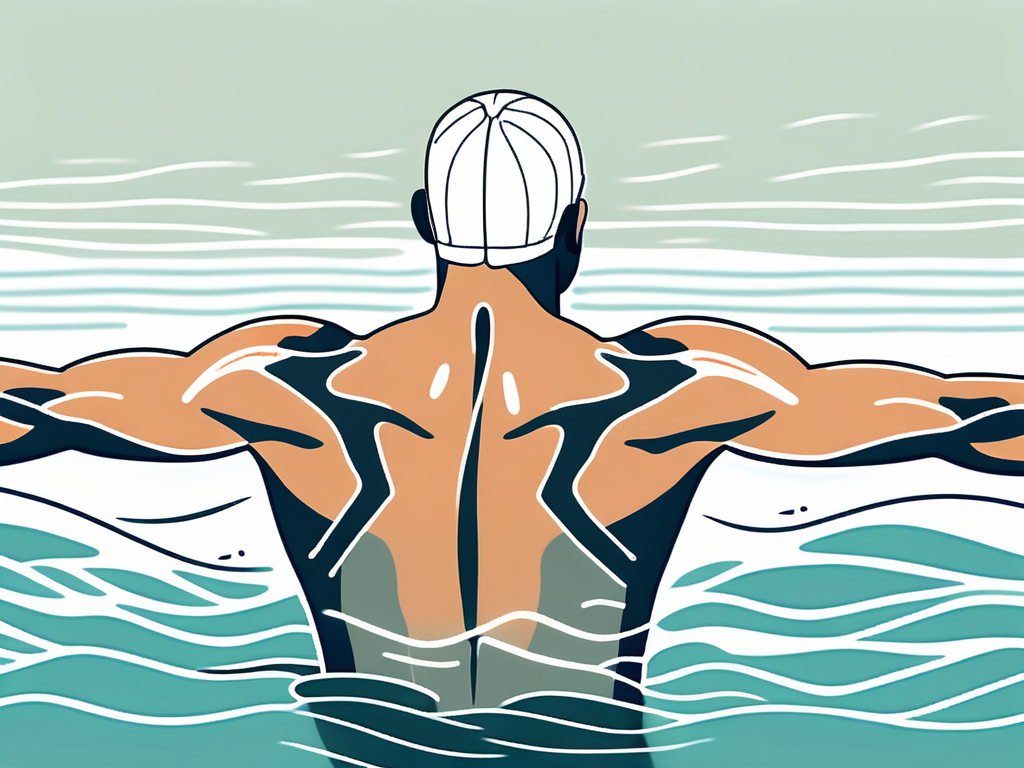Unlocking the Power of Swimming: Why It's a Must for Everyone
Swimming is a sport that has a universal appeal. Whether you're a competitive athlete, a recreational swimmer, or just someone looking for a fun way to stay fit, swimming offers something for everyone. In this article, we will dive into the many benefits of swimming, from its cardiovascular advantages to its impact on mental health. We will also explore the different swimming strokes and muscle groups activated during a swim. So, let's break down the basics of swimming strokes and explore the various types of swimming techniques.
The Universal Appeal of Swimming
Swimming is an activity that transcends age, gender, and physical ability. The ability to stay afloat and move through the water is a skill that everyone can learn, regardless of their swimming experience. Whether you're a toddler taking your first dip in the pool or an elderly adult seeking a low-impact exercise option, swimming is accessible to all. So, what are the basics of swimming strokes? Let's find out.

Breaking Down the Basics of Swimming Strokes
There are four primary swimming strokes: freestyle (also known as front crawl), backstroke, breaststroke, and butterfly. Each stroke has its own unique technique and benefits. Freestyle is the fastest and most efficient stroke, utilizing a rhythmic arm and leg action to propel the swimmer forward. Backstroke is performed on the back, with an alternating arm and leg movement. Breaststroke involves a simultaneous arm and leg motion, likened to a frog's kick. Finally, butterfly requires simultaneous arm movement, along with an undulating dolphin kick. By learning and practicing these strokes, you can greatly enhance your swimming technique and enjoyment in the water.
Exploring Different Types of Swimming Techniques
In addition to the four main swimming strokes, there are various other techniques that can add variety to your swimming routine. For instance, sidestroke involves a scissor-like kicking motion and a modified arm stroke. This stroke is often used for leisurely swimming or as a recovery stroke during long-distance swims. Another technique, known as the elementary backstroke, emphasizes a synchronized arm and leg movement akin to the backstroke but with a different arm motion. These additional techniques can be a great way to mix up your swimming routine and challenge different muscle groups.
But wait, there's more! Let's dive deeper into the world of swimming and explore the fascinating history behind this beloved activity. Did you know that swimming has been a part of human culture for thousands of years? Ancient cave paintings have been discovered, depicting people swimming in rivers and lakes. In fact, the first recorded swimming competitions date back to ancient Egypt and Greece, where swimmers would compete in races and showcase their skills.
Throughout history, swimming has not only been a recreational activity but also a vital life skill. In many ancient civilizations, swimming was taught to soldiers, sailors, and fishermen to ensure their safety in water-related situations. Even today, swimming lessons are an essential part of many school curriculums, as learning to swim can potentially save lives in emergency situations.
Swimming is not just a physical activity; it also offers numerous health benefits. Regular swimming can improve cardiovascular fitness, increase muscle strength and tone, and enhance flexibility. It is a low-impact exercise that puts minimal stress on the joints, making it an excellent option for individuals with arthritis or other joint conditions. Moreover, swimming is known to reduce stress and promote mental well-being, as the rhythmic movements and soothing water create a calming effect on the mind.
So, whether you're looking to improve your swimming technique, challenge yourself with different strokes, or simply enjoy the therapeutic benefits of being in the water, swimming has something to offer everyone. Dive in and discover the joy of swimming!
Dive into the Benefits of Swimming for Fitness
Not only is swimming an enjoyable activity, but it also offers a multitude of fitness benefits. Let's explore some of the ways swimming can improve your overall health and well-being.
The Cardiovascular Benefits of Swimming
Swimming is a highly effective cardiovascular workout. As you move through the water, your heart rate increases, promoting the efficient circulation of blood and oxygen throughout your body. The continuous resistance provided by the water also helps to build cardiovascular endurance, making swimming an excellent choice for improving heart health and increasing overall stamina.
Building Strength and Endurance Through Swimming
Swimming is a full-body workout that engages multiple muscle groups simultaneously. The resistance of the water forces your muscles to work harder and become stronger. Each swimming stroke targets different areas of the body, allowing for a comprehensive workout. For example, freestyle primarily works the upper body and core, while breaststroke targets the chest, arms, and inner thighs. By incorporating a variety of strokes into your swimming routine, you can effectively target different muscle groups and improve overall strength and endurance.
Muscle Groups Activated During a Swim
Swimming engages a wide range of muscle groups, providing a total-body workout. Let's take a closer look at the targeted muscle engagement in different swimming strokes and how swimming aids in strengthening your core.

Targeted Muscle Engagement in Different Swimming Strokes
Each swimming stroke activates specific muscle groups. Freestyle, for instance, engages the muscles in your arms, shoulders, upper back, and core. Backstroke targets the muscles in your upper back, shoulders, and arms. Breaststroke primarily works the chest, triceps, and quadriceps, while butterfly activates the muscles in your chest, back, shoulders, and core. By incorporating a variety of strokes into your swim routine, you can effectively engage and strengthen various muscle groups throughout your body.
Strengthening Your Core with Swimming
In addition to the targeted muscle engagement mentioned earlier, swimming also provides an excellent opportunity to strengthen your core. The constant need to stabilize and streamline your body in the water requires strong core muscles. Incorporating exercises such as flutter kicks and dolphin kicks can further enhance your core strength while swimming. Developing a strong core not only improves your swimming technique but also benefits your overall posture and stability in daily activities.
The Psychological Benefits of Swimming
Swimming not only has physical benefits but also offers numerous psychological advantages. Let's explore how swimming can boost your mental health and provide therapeutic effects on the mind.
How Swimming Can Boost Your Mental Health
Swimming is a low-impact exercise that releases endorphins, known as the "feel-good" hormones. These endorphins promote a sense of well-being and can help alleviate symptoms of stress, anxiety, and depression. The rhythmic nature of swimming, combined with the soothing properties of water, provides a tranquil environment for relaxation and mental clarity. Whether you're swimming in a pool, lake, or the ocean, the calming effect of water can help reduce tension and promote a positive mindset.
The Therapeutic Effects of Water on the Mind
Water has long been associated with therapeutic benefits for the mind. It can serve as a form of sensory stimulation, providing a soothing and meditative experience. The buoyancy of water reduces the impact on joints and muscles, creating a weightless sensation that allows for relaxation and ease of movement. This unique environment can help relieve physical discomfort, improve sleep quality, and enhance overall feelings of well-being.
Swimming for Weight Loss: Fact or Fiction?
Swimming is often touted as an effective exercise for weight loss. However, let's explore the reality of its caloric burn and the importance of combining swimming with a healthy diet for weight management.
Understanding the Caloric Burn of Swimming
Swimming is indeed a calorie-burning activity. The exact number of calories burned depends on various factors such as intensity, duration, and individual body composition. On average, swimming can burn anywhere from 400 to 700 calories per hour. This makes it a viable option for those looking to lose weight or maintain a healthy weight. However, it's important to note that weight loss is ultimately achieved through a calorie deficit, meaning you must burn more calories than you consume.
Combining Swimming with a Healthy Diet for Weight Management
While swimming can contribute to weight loss, it's essential to pair it with a balanced and nutritious diet. Regular physical activity, such as swimming, helps increase your energy expenditure, but it must be complemented by a calorie-controlled eating plan. By incorporating whole foods, lean proteins, fruits, and vegetables into your diet, you can optimize your weight loss efforts and maintain a healthy lifestyle.
Injury Prevention Through Swimming
One of the major advantages of swimming is its low-impact nature, which makes it an excellent exercise option for those with joint issues or injuries. Let's take a closer look at how swimming can help prevent injuries.

Low-Impact Nature of Swimming for Joint Health
The buoyancy of water reduces the weight-bearing stress on joints, offering a safe environment for exercise. This makes swimming a beneficial form of physical activity for individuals dealing with conditions such as arthritis or joint pain. The gentle resistance provided by water also helps improve joint flexibility and range of motion. Regular swimming can aid in strengthening the muscles surrounding the joints, providing stability and reducing the risk of injury.
In conclusion, swimming is a truly versatile activity that offers numerous physical and psychological benefits. From its universal appeal to its impact on cardiovascular health, strength, and mental well-being, swimming is a must-try for everyone. So, dive into the water, explore the various swimming strokes, and unlock the power of swimming for yourself. Whether it's for fitness, weight management, injury prevention, or simply finding inner peace in the water, swimming has something to offer everyone. So grab your goggles, hit the pool, and let the transformative power of swimming propel you to new heights of physical and mental well-being.






